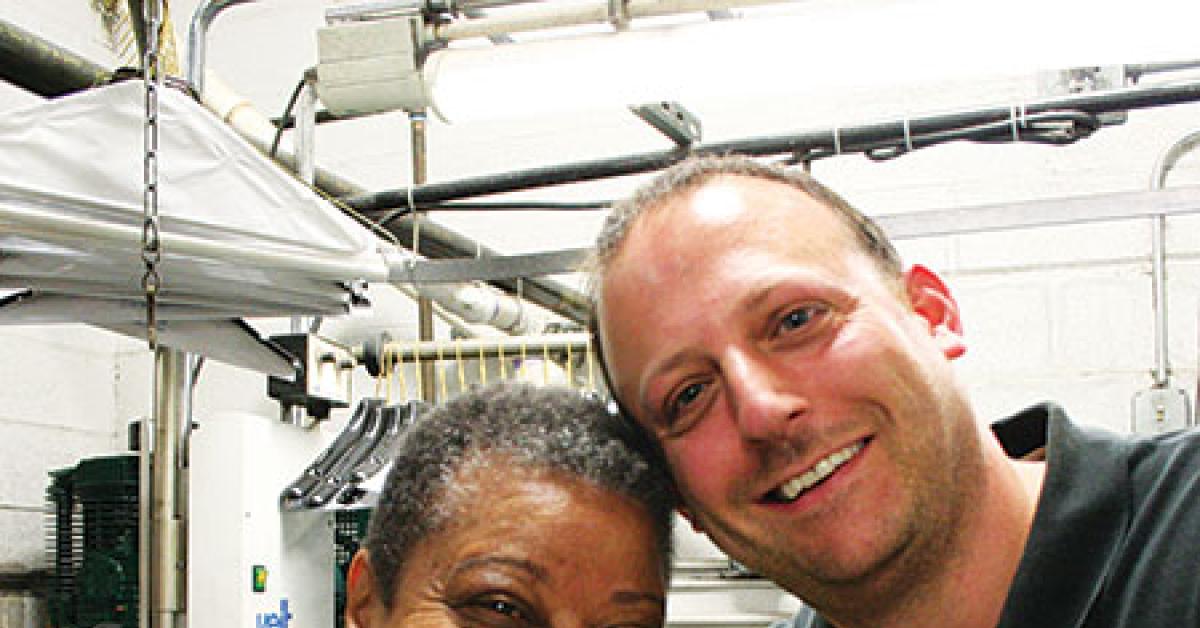CHICAGO — Safety is a state of mind. You look at risks and take steps to minimize. You eliminate or minimize hazards and you communicate safe steps and practices. You have regs to follow. You use warning labels. You talk about dangers, teach safe operations and practices, prepare for what to do in case of emergency, and constantly remind all to be safe daily. So ... are you? Will you? Do you?
S-A-F-E-T-Y.
Safety.
Dance.
Hear the music playing in your head right now? Maybe you’ll go check out the ’80s hit Safety Dance.
Sing a song of safety — about keeping your plant and personnel safe every day. Sing it when you get home, when another day of safe work is behind you.
But then get right back at it tomorrow. Because the pursuit of safety is never-ending.
The biggest challenge to keeping plant and people safe every day, in the words of Grant Carson, owner of Alameda, Calif.-based Martinizing Dry Cleaners, and part of the Martinizing franchise: “Developing and maintaining a safe culture, constantly reminding people of the benefits of working safely.”
Reaffirming a commitment to safety on the job is key. Not only in the work itself but in how personnel go about their workday.
“Most accidents in drycleaning and laundry operations are not industry-specific,” notes Jon Meijer, membership director at the Laurel, Md.-based Drycleaning & Laundry Institute (DLI), an organization that serves to help member professional dry cleaners in the garment care industry.
He relates that most accidents resulting in workers’ compensation claims are similar to those that impact many other types of operations. They involve slips and falls, ergonomic-related issues, heavy lifting (back) and so on.
“Rarely are violations brought about because of a chemical-related concern,” says Meijer. “Common maintenance and an awareness of routine concerns can usually be addressed quickly and easily before an accident occurs.”
Generally speaking, Meijer offers these tips you can follow as a checklist to help with your drycleaning operational safety routines and also to remind all personnel about how to be safe each day: “Keep your plant clean, free of debris, and teach common sense. Take care of the easy stuff,” reminds Meijer.
“Most accidents happen because of just plain carelessness and a lack of routine maintenance in the plant. Plant and personal safety begins with the owners and then managers of the plant,” he indicates.
If the owner or manager doesn’t care, no one else will either, points out Meijer.
“Doing the easy stuff might include making sure that spills are cleaned up, taking care of equipment leaks, sealing hazardous-waste drums, locking out or placing signs on equipment that is in maintenance or repair,” he notes.
And, he adds, “Storing chemicals in a safe place when not in use, removing common tripping hazards and just keeping the plant clean.”
Common sense is a common thread. Sometimes it’s easier said than done. When you skip safety steps, you gamble. Take each day anew. Treat the workplace with respect.
“Safety in the workplace is an everyday occurrence,” notes Griffin Quinones, owner, Vapor Sudden Service Cleaners in Monterey, Calif. “Be proactive. Walk throughout the plant and look for things that might become a problem, such as steam leaks, hoses, and hangers on the floor.”
“Check first-aid kits. Band-Aids® and burn gel have a way of disappearing. You never know when you’ll need them,” says Quinones.
He notes that OSHA visited his cleaners “about four years ago (and) one of the main things they were concerned about was lockout/tagout (LOTO). They can be purchased at Home Depot. Make sure they are kept in a safe place and used when necessary, and dated when used.”
The U.S. Department of Labor’s Occupational Safety & Health Administration (OSHA) website provides this explanation of lockout/tagout: The OSHA standard for The Control of Hazardous Energy (Lockout/Tagout), Title 29 Code of Federal Regulations (CFR) Part 1910.147, addresses the practices and procedures necessary to disable machinery or equipment, thereby preventing the release of hazardous energy while employees perform servicing and maintenance activities.
Quinones says there are “New OSHA HCS rules regarding proper labeling of chemical containers. This not only includes spotting bottles, but everything used inside the workplace. An example would be Windex®. Used at home, it’s OK, but if you have it at work, you need a Safety Data Sheet.”
Safety in the workplace is a high priority. Quinones also says he installed cameras in the counter and production areas: “So that we can monitor what is going on. Our concern,” he notes, “is for the safety of the employees on the counter in the event of theft, and negligence in the work area.”
If an injury should occur and you’re not there, you will have it on camera, he adds. “We have outside cameras as well. And our cameras are also remote, meaning we can watch what’s going on from a laptop at home or anywhere.”
Another tip he recommends is for a dry cleaner to have a safety inspection.
“Have a good insurance agent that will help you regarding your workplace. Request to have someone from the insurance company come to your cleaners and do a safety inspection,” says Quinones.
“Lastly,” he insists, “document, document, document every safety meeting with your drivers and inside employees.”
Check back Thursday for the conclusion.
Have a question or comment? E-mail our editor Dave Davis at [email protected].


